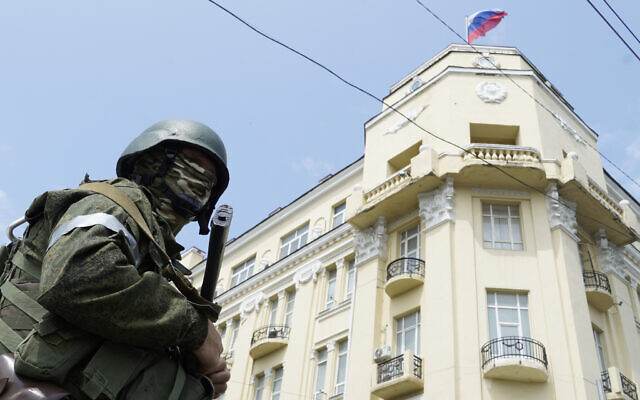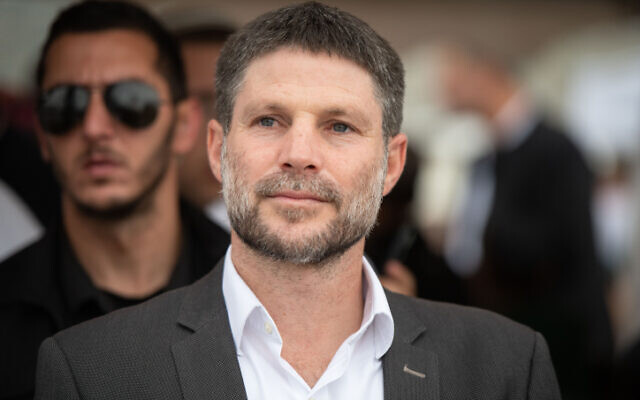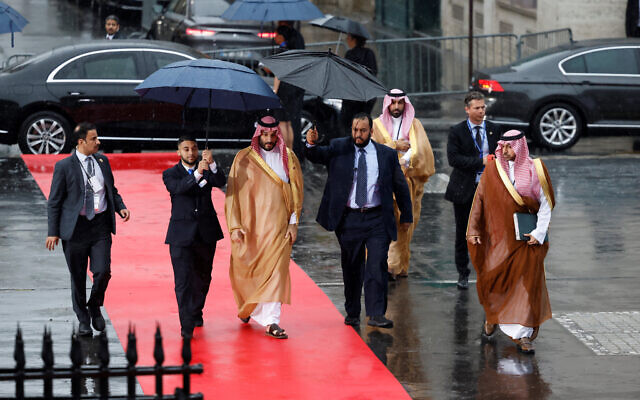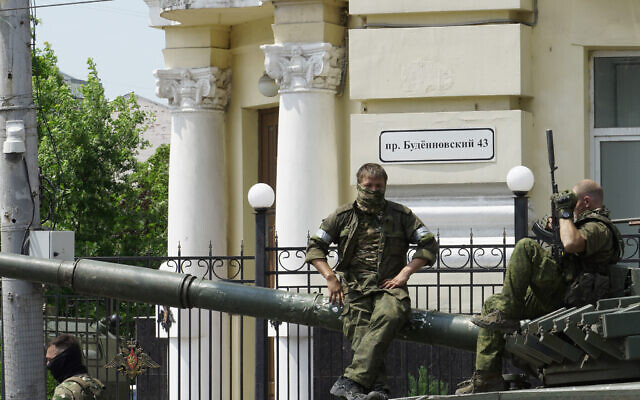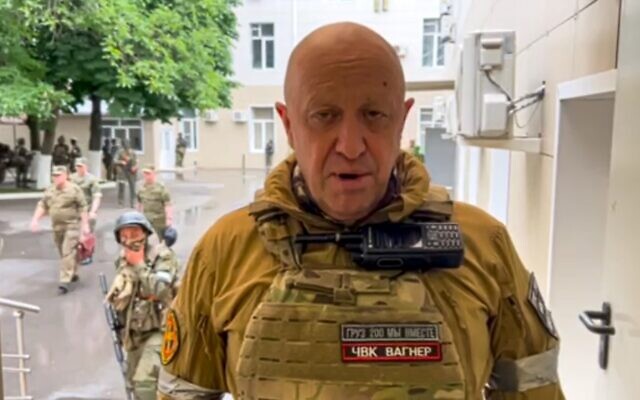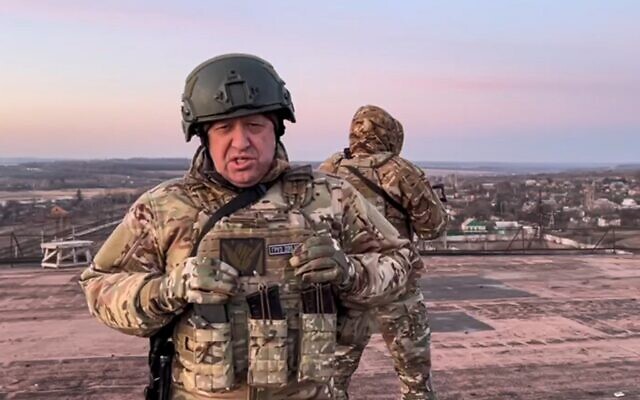After years of dead-end air campaigns, pinpoint use of ground forces may offer way out
Yet another round underlined the overreliance on fire power and Iron Dome. The IDF doesn’t want to retake Gaza, but has a ‘Concept for Victory’ that puts troops in enemy territory
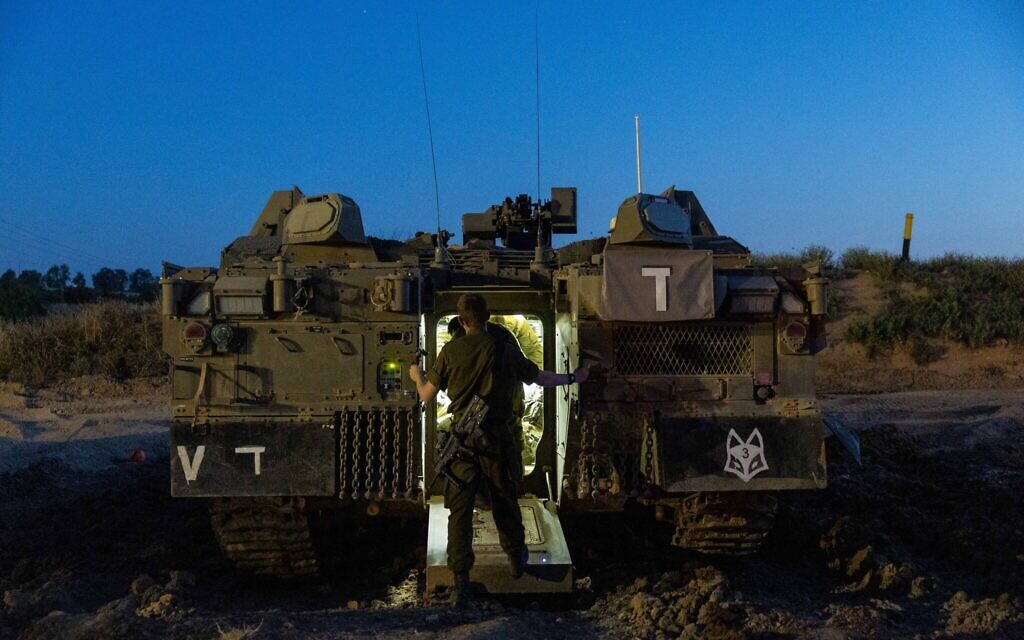
Two Israeli officers made the rare decision to issue a stark warning in an official IDF journal. Israel’s military, they cautioned, is at a dead end.
Writing in the wake of a series of three “deterrence operations,” Brig. Gen. Tamir Yadai and Lt. Col. Eran Ortal pointed out that the conflicts were part of a predictable and worrying pattern: Israel’s air force carries out an opening strike that kills a senior commander and temporarily knocks the enemy off balance; Israel decides to continue the operation; the IDF then struggles to keep pressure on the enemy, who recovers and fights back; Jerusalem turns to the international community to help bring the fight to a close; Israel enjoys a limited period of quiet before the next round.
They were writing more than a decade ago.
The 2013 article came out in the aftermath of Operation Pillar of Defense in Gaza, a weeklong fight that started with an airstrike on Ahmed Jabari, the second-in-command of Hamas’s military wing.
The phenomenon described by the two officers, both of whom continued to rise through the IDF ranks, stretched back some 20 years at the time, to operations Accountability and Grapes of Wrath against Hezbollah in Lebanon in the 1990s.
More than a decade after Yadai and Ortal lamented the pattern, the IDF is still seeking a way out of the dead end of recurring deterrence operations, but the first signs of a shift are emerging.

Israelis were subjected to another stark reminder of the problem this month. The Netanyahu government launched Operation Shield and Arrow by taking out three senior Palestinian Islamic Jihad officials, sparking five days of intense fighting and zero hopes that it would be the last round between the two.
The strike eliminated Khalil Bahtini, PIJ commander for the northern Gaza Strip, who had taken over for Tayseer Jabari, who was killed by an Israeli airstrike in August 2022 at the opening of another Gaza operation, Breaking Dawn. Jabari had replaced Hussam Abu Harbeed, killed by Israel during a 2021 operation, who himself had replaced Baha Abu al-Ata, struck by Israel’s air force at the start of Operation Black Belt in 2019.
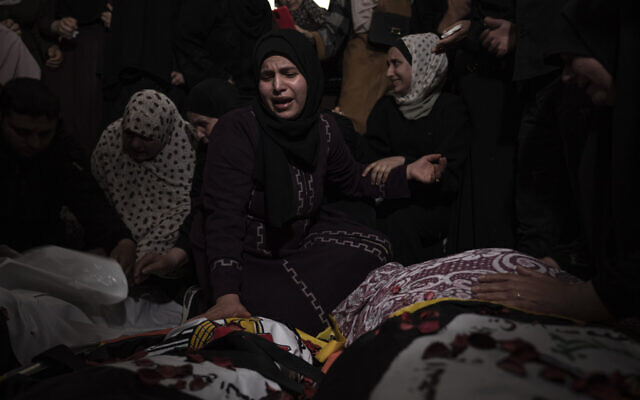
Years of airstrikes, rockets, assassinations and brief bouts of tense calm show that the IDF has become stuck in a paradigmatic rut that has placed long-term security — let alone victory — out of reach.
Finding a way out first requires understanding how Israel ended up in this situation.
Farewell to maneuver
A number of vectors have converged to create the confounding reality Israel finds itself in today, not least of which is the military conception of ground maneuver as a liability rather than the key to victory.
During Israel’s early decades, the IDF’s operational concept rested on aggressive maneuver by its ground forces into enemy territory, quickly moving the fight away from population centers to deliver decisive defeats to adversary forces.
Ground maneuver refers to the use of large ground forces to slice through slower enemy formations where opportunities arise, breaking the enemy’s cohesion, complicating its war plans and shattering morale.

The air force played a number of vital supporting roles in those battles, especially in destroying enemy airpower to open the way for IDF tanks to shatter Arab armor.
That approach was stunningly effective during the era of Israel’s victories over conventional armies. Arab divisions were unequivocally devastated on the battlefield, and captured territory was the basis for peace talks with the leaders of the hostile coalition, which saw members drop out with each defeat at the hands of Israeli ground forces.
The ground maneuver concept began to crumble in the wake of the 1973 Yom Kippur War. Though that conflict still ended with a classic battlefield victory by Israel’s ground forces, the unexpected losses by IDF tanks at the hands of Egyptian and Syrian missiles, and an unprecedented loss of faith in leaders sending young men into battle, spurred Israelis to reconsider whether risking their lives in pitched battles was as necessary as they had been told.

When Israel invaded Lebanon in 1982, the loss of faith, combined with liberalizing social and cultural norms, sparked a bitter fight over morality and the justice of Israel’s application of military force, as well as questions over sacrifice for the state.
The 1982 war, another classic maneuver by an IDF ground force far larger than the one that won in 1973, also pointed to a new way forward for Israeli planners, who wanted an alternative to casualty-heavy ground operations that needed hundreds of thousands of reservists. Using innovative electronic warfare and UAVs during Operation Mole Cricket 19, the IAF succeeded in smashing the Syrian anti-aircraft SAM array in the Bekaa Valley, the first time in history that a Western air force had wiped out a Soviet-made air defense network.
The debate over the proper application of military force in Israel took place at the same time that US military thinkers were relying on their technological advantage to deal with the problem of the Soviet numerical advantage in Europe. Instead of meeting Russian armor head-on, the so-called Revolution in Military Affairs, or RMA, envisioned using precision missiles and improved intelligence capacity as the keys to devastating enemy forces. The stunning US victory over the large Iraqi army in 1991 underscored to Israel the potential for RMA to offer a means of victory without losses to ground forces.

It also would obviate the need to capture ground, seen increasingly by Israel as a liability in the wake of the First Palestinian Intifada and amid the long occupation of southern Lebanon by the IDF. “The possibility that the IDF would go again into Lebanon in order to defeat a terror organization wasn’t a real possibility at any stage after the withdrawal to the security zone in 1985,” wrote Moshe “Chicho” Tamir, a former brigade commander in southern Lebanon, in 2005.
The IDF’s increasing preference for artillery and airstrikes over ground maneuver became impossible to ignore in the mid-90s. The two major operations against Hezbollah rocket fire — Accountability in 1993 and Grapes of Wrath in 1996 — were conducted entirely through stand-off firepower, without boots on the ground.
Advances in stealth technology, UAVs and electronic warfare in the 1990s and early 2000s led some Israeli planners to entertain ideas of a “perfect war,” according to Itai Brun, former head of the IDF’s Military Intelligence Analysis Division. Though they might not have been explicitly cognizant of it, security chiefs seemed to be working under the implicit belief that Israel could carry out campaigns with no casualties to its forces and no civilian deaths on the other side.

The threat that preoccupied the IDF at the time, the Second Intifada, was handled by small infantry units carrying out raids and arrests of Palestinian terror suspects, along with airstrikes on terror leaders or rocket launchers within cities.
The major exception was Operation Defensive Shield in 2002, in which IDF forces retook Palestinian cities and fought pitched battles against massed gunmen. But that operation, not coincidentally Israel’s last decisive victory in a campaign, was seen as relevant only to the unique conditions in the West Bank, and didn’t lead to a renewed appreciation for classic ground maneuver in subsequent IDF documents.
Not surprisingly, the lion’s share of innovative technology and budget increases went to the air force and intelligence units, while the IDF ground forces — seen increasingly as irrelevant to contemporary operations — suffered through a lost decade.
Separation
The vicious cycle of inconclusive deterrence operations can also be attributed to a shift away from holding enemy territory, detaching unilaterally rather than subjecting soldiers to a slow bleeding by guerrilla forces and damaging Israel’s standing on the world stage.

Israel withdrew unilaterally from Lebanon in 2000. In the ensuing years, Israeli leaders had no desire to get stuck again in the Lebanese mud by using ground forces against Hezbollah, or to countenance that pulling the troops out may have been a mistake. Instead, the idea was to hold Syria accountable if Hezbollah attacked Israel. “I hope no one will dare, and I think that whoever dares will have to pay a price… I really don’t recommend to anyone to try us,” prime minister Ehud Barak cautioned Syria and its allies ahead of the pullout.
Israel took a similar step in Gaza, pulling out all civilians and troops in the 2005 disengagement. Prime minister Ariel Sharon warned Palestinian terrorists not to take the withdrawal as a sign of weakness: “If they choose fire, we will respond with fire, more severe than ever.”
The move, and the security fence that started going up in the West Bank at the same time, reflected an Israeli desire to solve its conflict with the Palestinians by simply separating from them, having given up on the chances for a negotiated peace.
The enemy gets a vote, too
Israel’s enemies have paid close attention to the IDF’s metamorphosizing military doctrine.
The overwhelming airpower and precision strike capabilities displayed by the US in Kosovo and Iraq, and by Israel in Lebanon and Gaza, caused Syrian generals, Hamas, and Hezbollah to wake up to a distressing reality. These forces understood that Israel enjoyed military dominance over them in every conventional realm.

While they could carry out localized attacks on IDF forces in contested territory, they did not have the firepower needed to deter Israel.
Paralleling the IDF’s shift away from ground operations, Palestinian terror groups also looked to firepower, investing in building rocket caches that could terrorize Israel’s population without actually sending fighters over the border.
The rockets’ effect as a strategic deterrent, especially wielded by Hezbollah, has grown as their range, payload, and precision has gradually increased.
Terror groups have also honed ways to avoid Israel’s airstrikes through concealment, reduced signatures, and defensive tunnels.
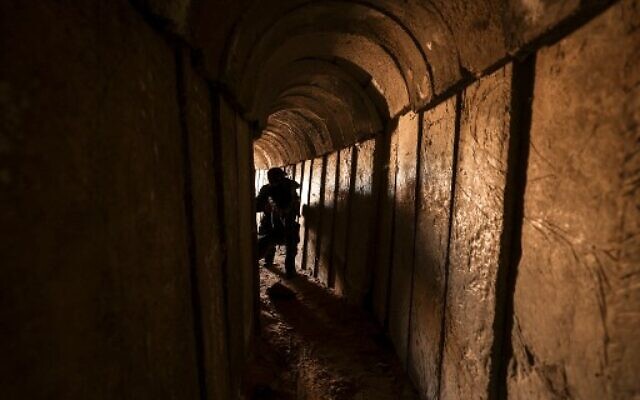
In 2017, IDF Ground Forces Commander Kobi Barak lamented that improved tech to track where rockets were being fired didn’t translate into increased effectiveness against the actual threat.
“The enemy, on the other hand, is usually successful in fleeing from these targets before they are attacked. We destroy the coordinates, but are struggling to hit the enemy,” he said.
The best offense is a good defense?
The final vector keeping Israel locked in the pattern of unending flareups is the central pillar of its anti-rocket strategy: Iron Dome, and defense in general.
In the past, the IDF shunned investments in defense, preferring to use limited budgets on the offensive capabilities designed to quickly neutralize enemy threats.

But after Hezbollah succeeded in maintaining sustained Katyusha rocket fire throughout the month-long 2006 Second Lebanon War, the 2007 Meridor Committee on Israel’s National Security Doctrine introduced defense as a pillar in the national security concept.
The same year, then-prime minister Ehud Olmert accepted the recommendation of defense minister Amir Peretz, and approved the Iron Dome air defense system as Israel’s solution against short-range rockets.
Investment in defense aroused opposition this time around as well. Many IDF officers saw the system as a threat to the IDF’s offensive war-fighting concept. What’s worse, they argued, missile defense could even damage Israel’s deterrence, as it would take money from the offensive capabilities on which that deterrence rests.
It didn’t take long for the Iron Dome to affect how Israel fought. The Gaza operation that took place before Iron Dome’s operational deployment, the 2008-9 Operation Cast Lead, saw significant ground maneuver by IDF infantry and armored forces.

After the Iron Dome was deployed in 2011, Israel fought two more major conflicts against Hamas. In the 2012 Operation Pillar of Defense, the IDF relied entirely on stand-off firepower and did not send troops in, while the limited ground advance in the 2014 Operation Protective Edge was part of a defensive effort against tunnels, and was not meant to defeat Hamas in the field. Troops have barely entered Gaza since.
The focus on defense may also harm the IDF’s offensive thinking. In a 2015 article, “Iron Dome – the New Maginot Line,” IDF Brig. Gen. (res.) Meir Finkel compares the system to the defensive fortifications line France built in the 1930s to hold off a German offensive.
The state-of-the-art Maginot Line consumed 6 percent of France’s defense budget from 1930 to 1937, taking desperately needed funds from offensive capabilities like tanks and planes and contributing to an illusory atmosphere of safety and security.
Paradoxically, as Israel’s tactical capabilities from the air continue to improve, the strategic effectiveness of its air campaigns steadily decline.
It provided neither, and Germany sliced through the Ardennes Forest where the fortifications were sparse, leading France to surrender within 46 days.
“All the deficiencies of the Maginot Line — astronomical costs at the expense of offensive means, the creation of false security and the atrophy of the army’s offensive thinking — could also exist in the context of Iron Dome,” warned Finkel.
Israel’s leaders have pointed to Iron Dome as a game-changer, allowing Israel to pound Gaza from the air and “restore deterrence” without having to worry excessively about reprisal rocket launches on civilians.
But as the prime minister and others declare victory in front of Iron Dome batteries, Hamas’s and Islamic Jihad’s capabilities continue to grow. Rockets can strike deeper into Israel now than before, managing to temporarily shut down Ben Gurion Airport on more than one occasion.

Paradoxically, as Israel’s tactical capabilities from the air continue to improve, the strategic effectiveness of its air campaigns steadily declines. While IDF spokespeople send out videos of missiles homing in on a specific window in an office building, and boast of the Iron Dome’s interception rates, the battles are coming more often and enemy capabilities are growing.
A chance for victory?
There is hope for a way out. Since the 2013 article by Yadai and Ortal, recognition that the IDF’s approach must change has spread among the senior military leadership.
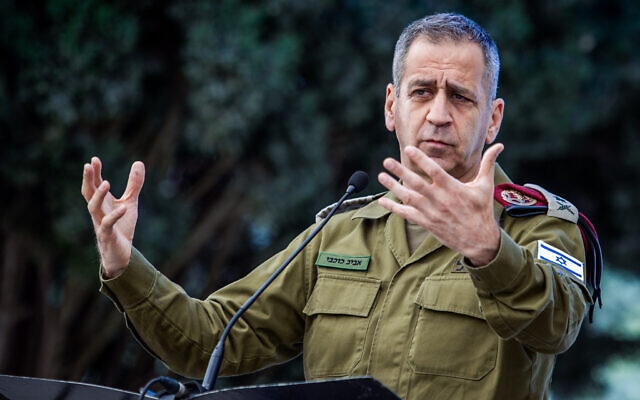
Under the previous IDF chief of staff Aviv Kohavi, the IDF released two important documents, “The Momentum Multiyear Plan” and its conceptual underpinning, “The Operational Concept for Victory.” The publications show that the IDF recognizes that there is a serious problem, and that it must change conceptually and materially. The two documents indicate a significant change in the way the IDF sees both itself and its adversaries. At the heart of these publications lies the IDF’s understanding that reactive measures are insufficient to confront contemporary challenges.
The documents shed the language of insurgencies, guerrillas, and asymmetric warfare that was especially in vogue in the early aughts after the 9/11 attacks and US invasions of Afghanistan and Iraq. Instead, Kohavi spoke about well-trained, capable “rocket-based terror armies.”
The Kohavi-led documents also accept the fact that deterrence operations not only don’t remove the threat, but also “inoculate the enemy against IDF power by gradually exposing him to limited doses of our capabilities,” according to Ortal, whose ideas were central to the new concept. The deterrence operations also told the enemy that his moves were having an effect on Israel “and that he should continue to develop them,” Ortal noted.
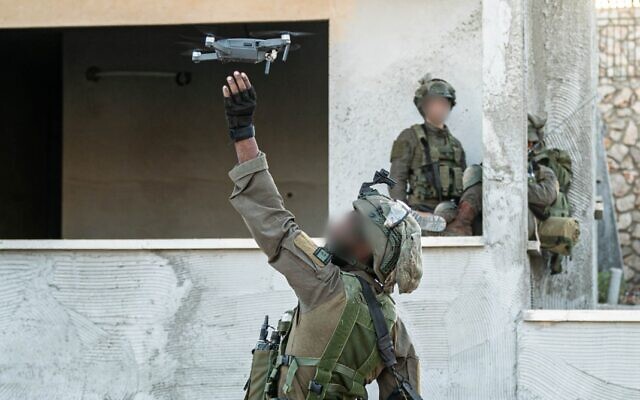
The new concept recognizes the need for decisive victory through ground maneuver. But it proposes a new type of maneuver, one that emerges from the understanding that territory is no longer the asset Israel’s enemies are trying to protect. Instead, it is their ability to maintain their rocket fire on Israel’s home front that must be suppressed.
The emerging ground forces concept takes advantage of new opportunities offered by civilian technologies, especially artificial intelligence, miniaturization, sensors, automation, and big data. This, in the Kohavi vision, will allow Israeli ground forces — maneuvering once again in Gaza or Lebanon– to utilize their proximity to stealthy enemy forces and launchers to locate and destroy them after they are forced to reveal themselves.
It is less the heavy, reservist-dominated maneuver of yesteryear, and more boutique, consisting of highly trained active units integrating a range of capabilities on the front lines.
Right now, however, the concept is meeting resistance. The IDF is slow to adopt organizational changes, which take years to filter through the ranks, much like any other large institution.

Though its leaders pay lip service to maneuver and victory, operationally the IDF continues to cling to the deterrence concept and the assumptions underpinning it.
The fact that Ortal and Yadai, both now generals, are in 2023 still calling in print for the change to occur is a sign that they still see plenty of reason to worry.
“Ostensibly, the IDF has agreed to this road map,” they wrote before the latest deterrence operation in Gaza. “But we are more focused on the bank of targets [for the air force] than we are on the question of victory itself. In order to confront the new challenge, we must wean ourselves off the habits we have become used to for more than three decades.|
In the meantime, the enemy learns, the threat grows, and Israelis can expect another inconclusive fight against Islamic Jihad or Hamas before long.
There's no paywall on The Times of Israel, but the journalism we do is costly. As an independent news organization, we are in no way influenced by political or business interests. We rely on readers like you to support our fact-based coverage of Israel and the Jewish world. If you appreciate the integrity of this type of journalism, please join the ToI Community.

We’re really pleased that you’ve read X Times of Israel articles in the past month.
That’s why we started the Times of Israel eleven years ago - to provide discerning readers like you with must-read coverage of Israel and the Jewish world.
So now we have a request. Unlike other news outlets, we haven’t put up a paywall. But as the journalism we do is costly, we invite readers for whom The Times of Israel has become important to help support our work by joining The Times of Israel Community.
For as little as $6 a month you can help support our quality journalism while enjoying The Times of Israel AD-FREE, as well as accessing exclusive content available only to Times of Israel Community members.
Thank you,
David Horovitz, Founding Editor of The Times of Israel


